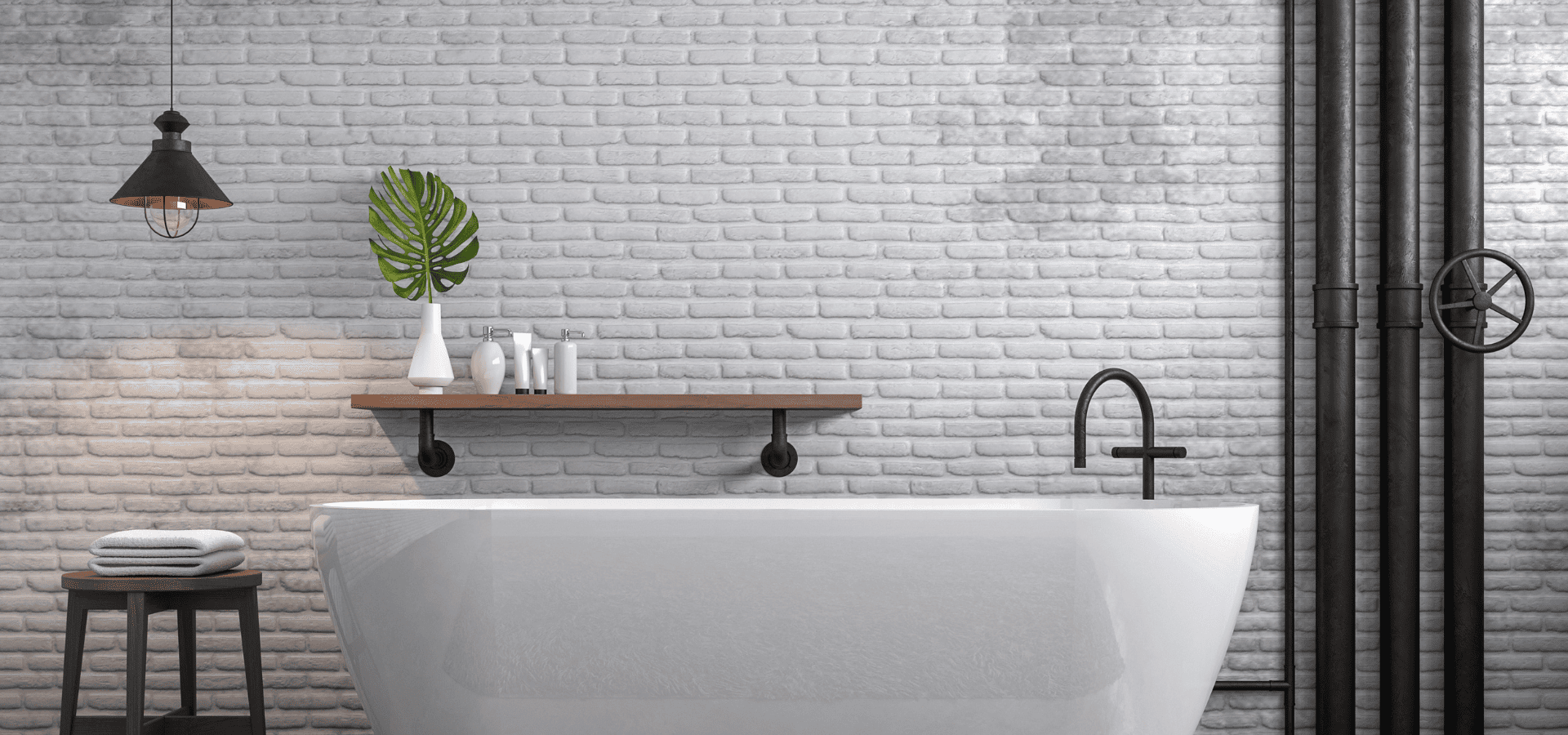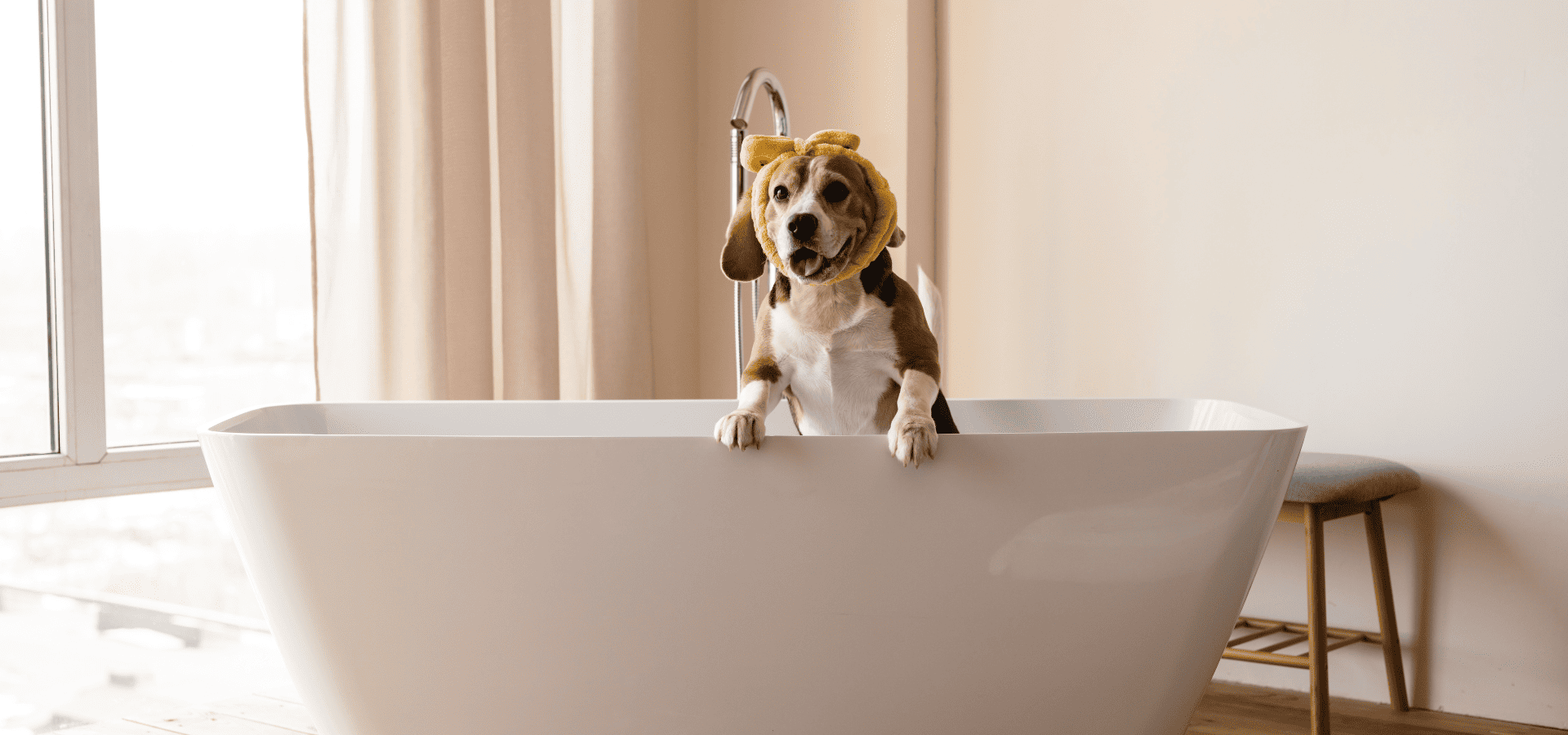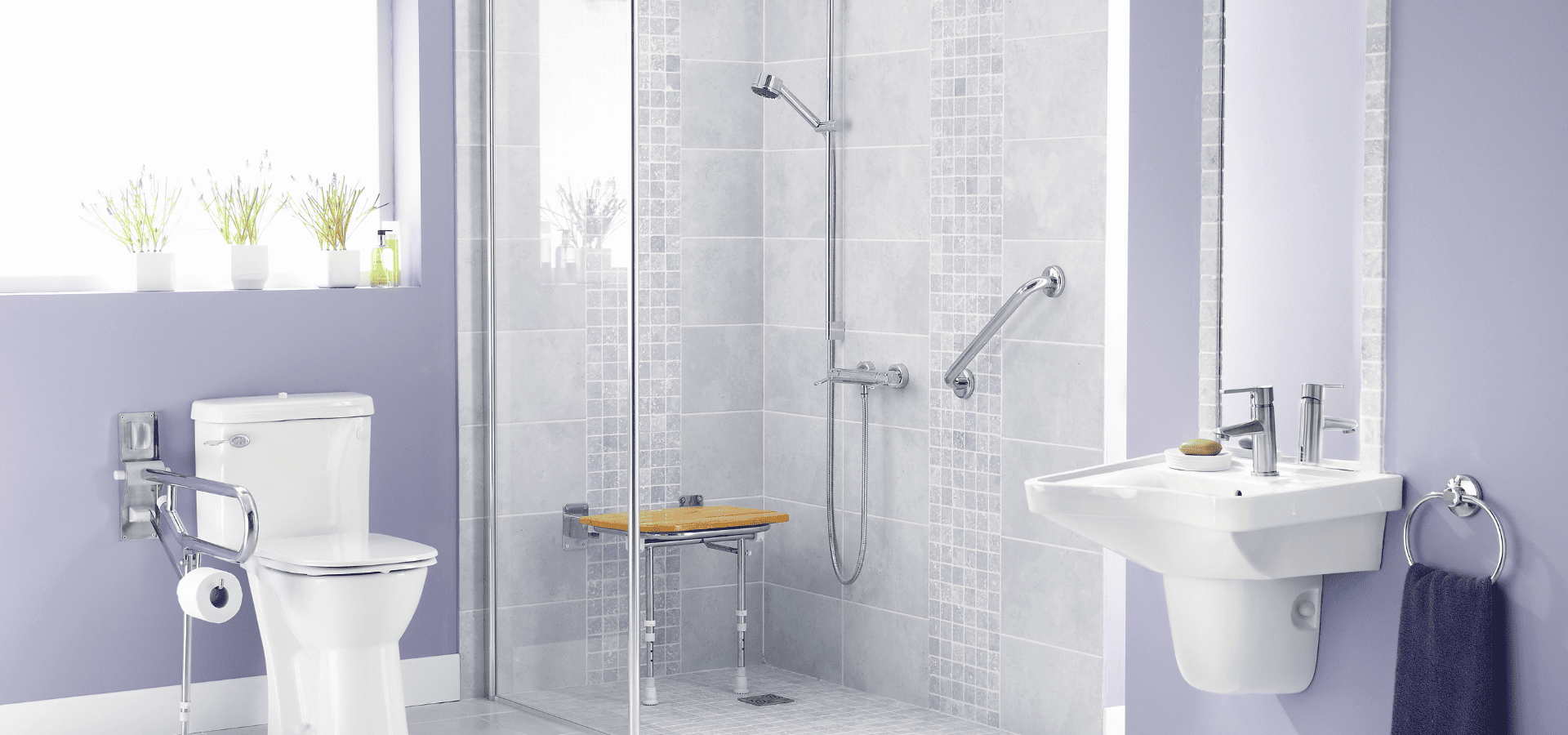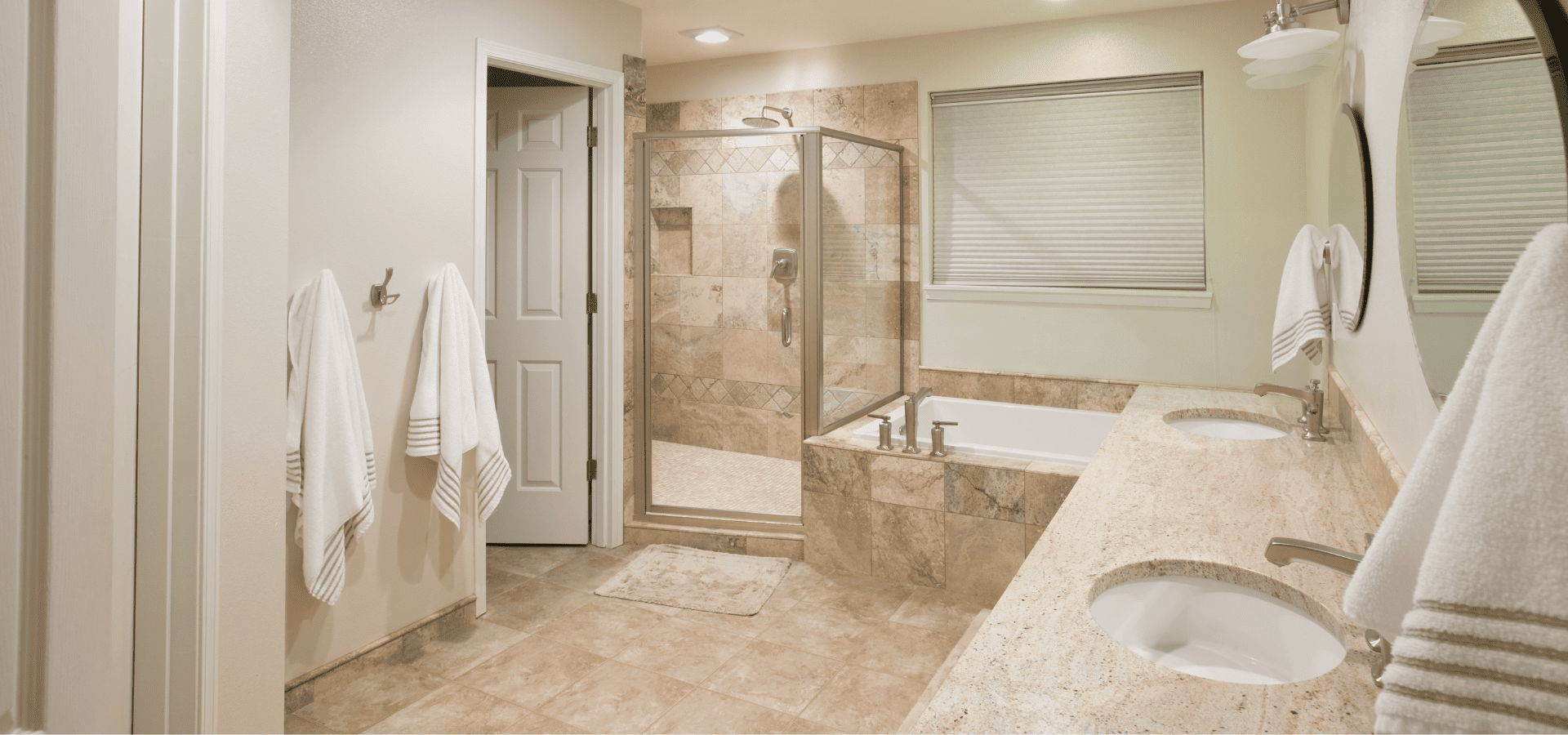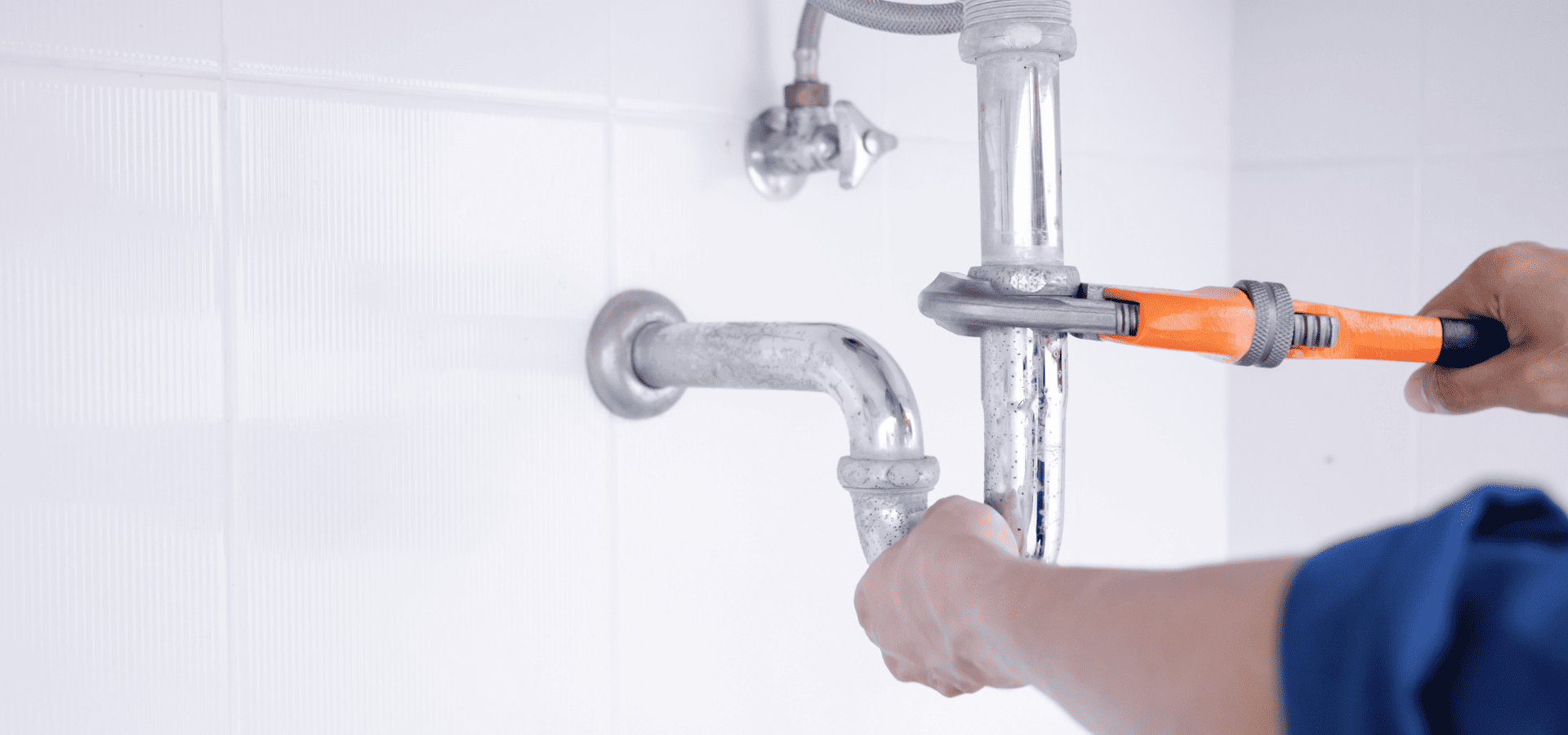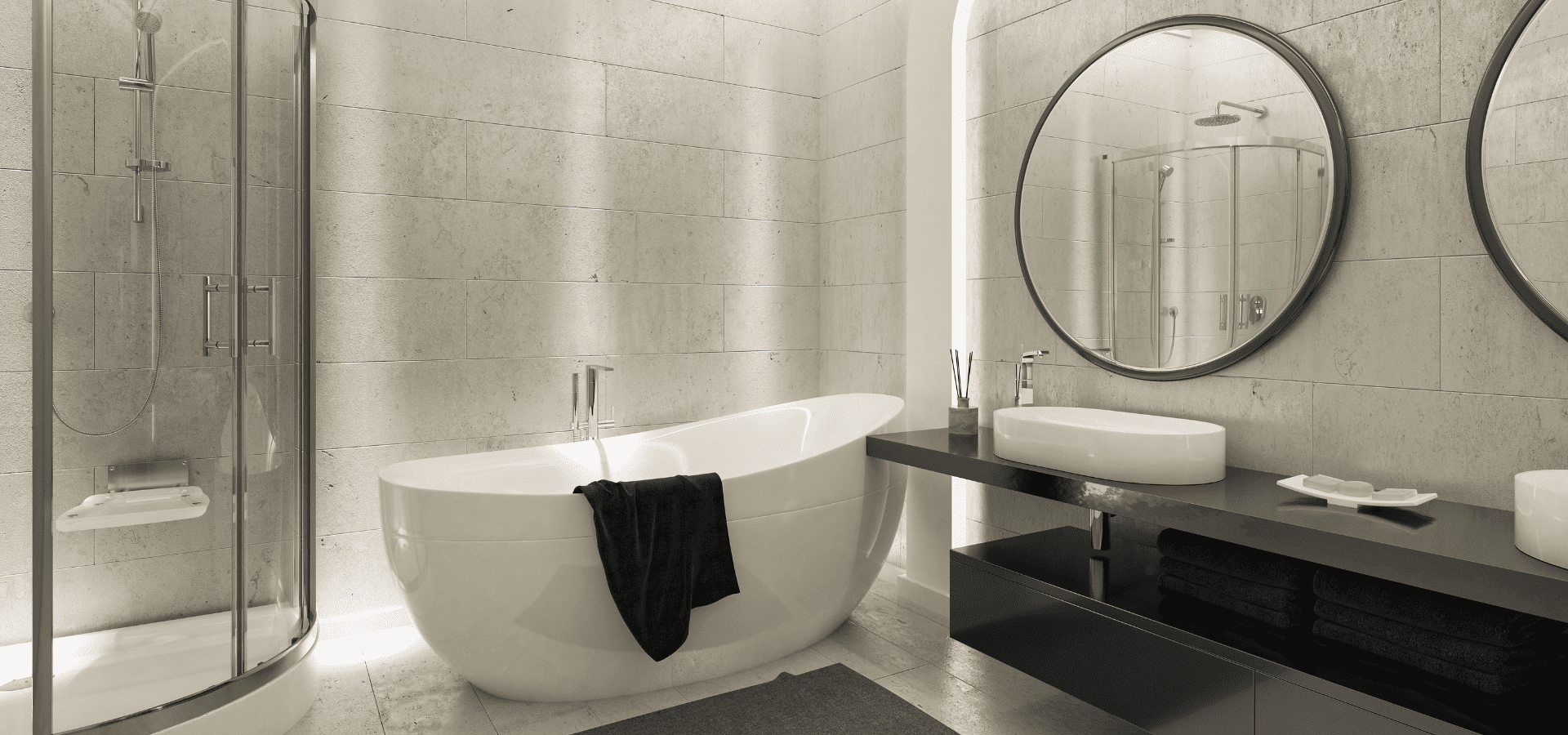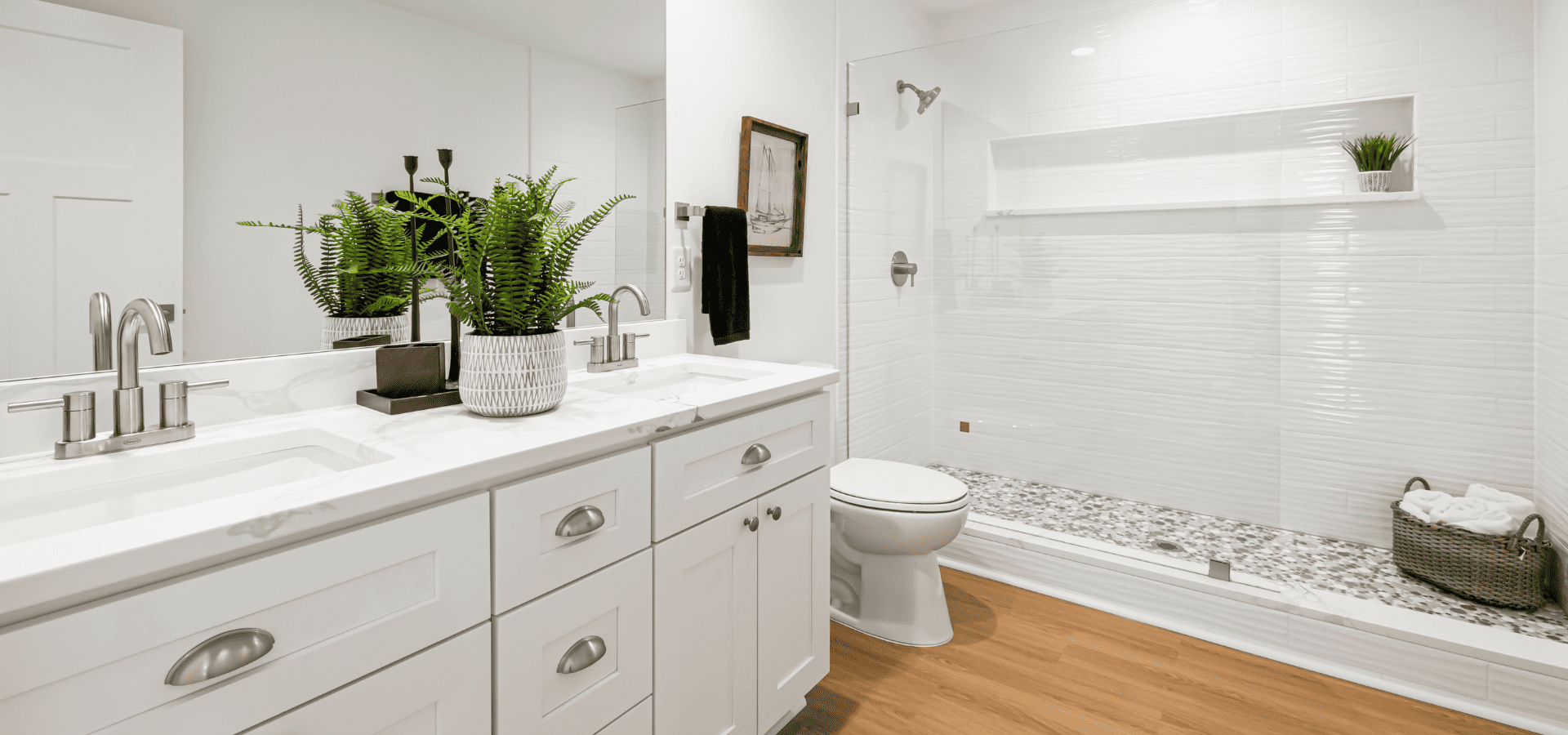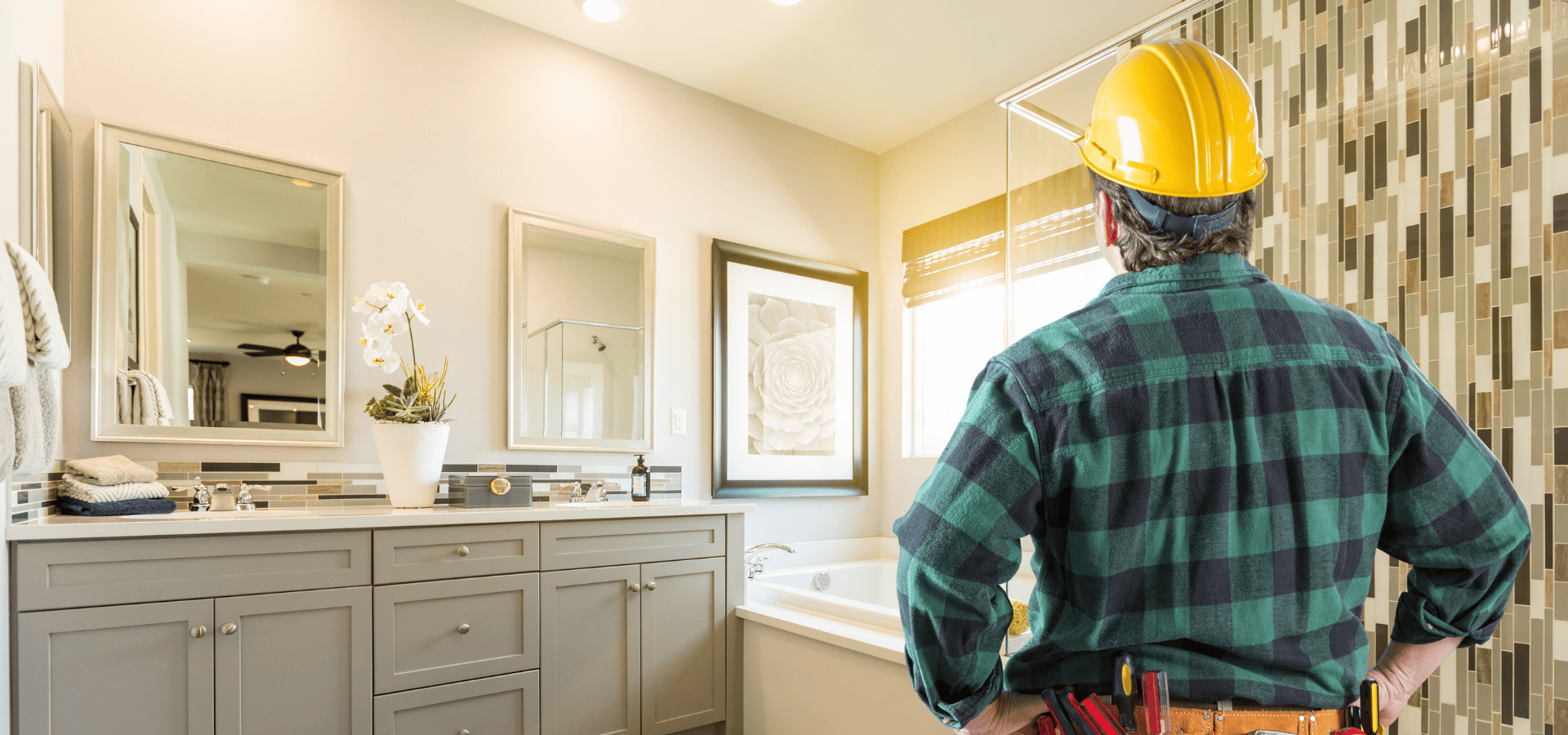The Ultimate Guide To Choosing Bathroom Fixtures
Your fixtures take up the most space in your bathroom. They're also arguably the most important pieces since they largely determine the functionality and practicality of your bathroom.
Even your aesthetics will still depend on your fixtures to quite a large extent.
That's why it's of paramount importance that you know how to choose the right ones for your bathroom.
If you don't know the first thing about bathroom fixtures, fret not, because that's exactly what you're here for.
In this article, you'll be learning the various options for each fixture so that you can decide for yourself the best one for your space.
What Are Bathroom Fixtures?
First off, this may seem like a redundant question to those who know the answer, but there are actually many people out there who aren't entirely sure what bathroom fixtures refer to.
Well, fixtures are basically permanent features that are meant to stay in place for a long time. They're either plumbed or wired in and will require some kind of renovation work to move or remove.
These include bathtubs, toilets, vanities, and showers.
Given how hard they are to move and remove, as you'd expect, the installation process similarly requires more work as well.
You'll usually have to deal with plumbing, waterproofing, and sometimes even tiling.
As such, any kind of installation or replacement is inevitably going to be relatively costly. Not only is more work involved, but the work involved is more complex, which means more qualified professionals are required, which in turn translates to higher labor costs.
In short, if you're doing any kind of installation or replacement of your fixtures, do set aside a large enough budget. Ideally, set aside at least a few hundred for small ones or even a few thousand for larger fixtures like bathtubs and showers.
1. Bathtubs
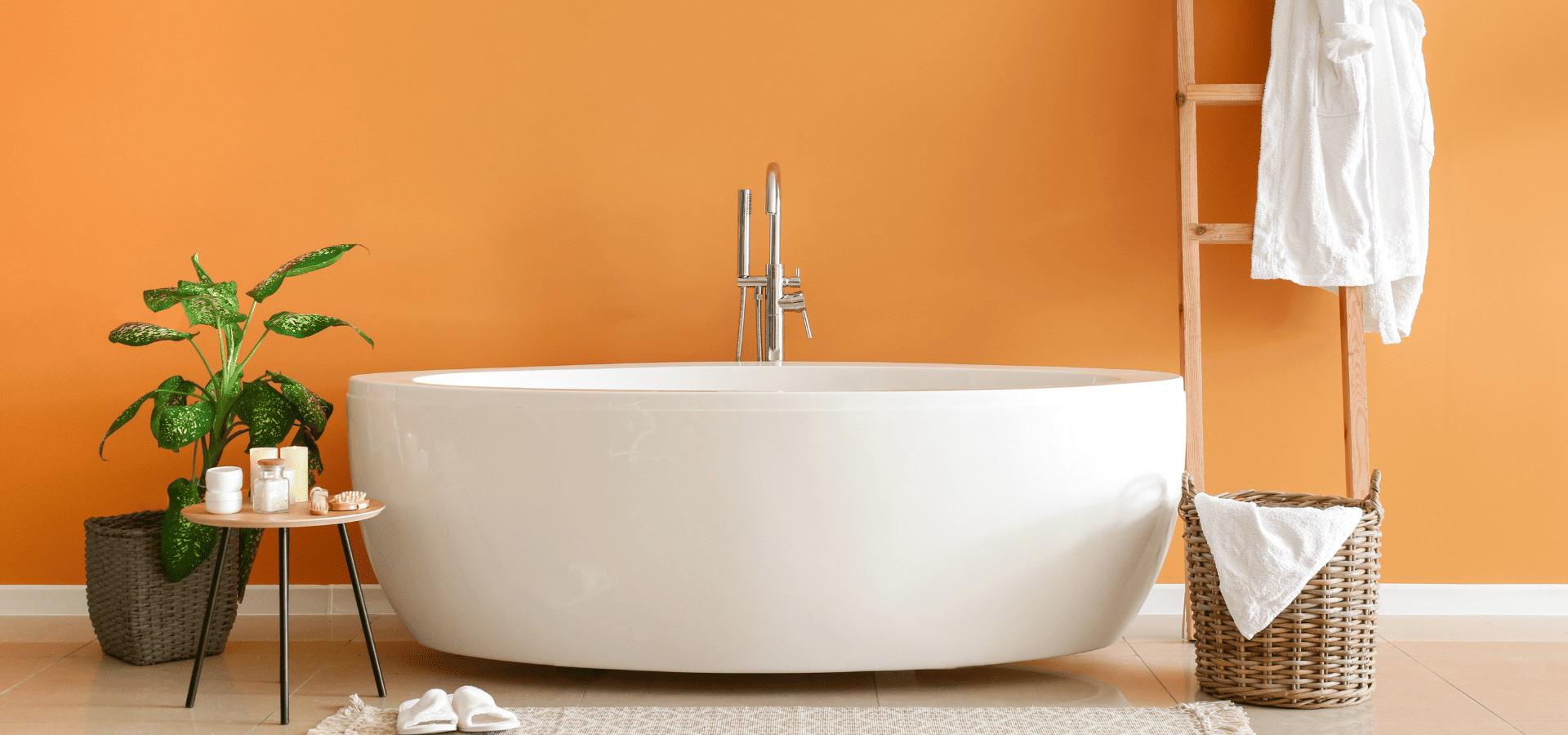
Your bathtub is going to be one of, if not the, most important fixtures in your bathroom.
Not all bathrooms have bathtubs, but where they're present, a lot of times, they’ll serve as your bathroom’s focal point simply because they’re the biggest and most easily noticeable feature of your bathroom.
Here are your options.
Types Of Bathtubs
When you hear bathtubs, most people think of an oval or rectangular-shaped tub that they climb into.
But there are actually many different kinds of bathtubs, and knowing your options will help you choose the best one for your space.
There are:
- Freestanding tubs: As the name suggests, freestanding tubs aren't attached to walls and can stand on their own.
- Alcove tubs: Alcove tubs are basically tubs with walls on three sides, so they're not exactly a type of tub, but rather a type of tub placement and installation. Alcove tubs are ideal for maximizing smaller spaces.
- Corner tubs: Corner tubs are somewhat similar to alcove tubs in the sense that in theory, it's more about where the tub is installed, and they also help conserve space. But oftentimes, corner tubs will come in unique triangular shapes that you'll see with few other tubs, so they're usually considered a whole separate type of bathtub.
- Drop-in tubs: Drop-in tubs are bathtubs where you first create a bowl-like structure out of your preferred material, then put the bathtub in. This gives you the flexibility to style your bathtub any way you like.
- Soaking tubs: Soaking tubs are meant for immersion and soaking, so they're deeper and also usually shorter in length.
- Walk-in tubs: Walk-in tubs are tubs where there are doors you can open to allow you to walk into the tub rather than climb in. These bathtubs are meant to enhance safety and accessibility.
- Whirlpool tubs: Whirlpool tubs are a more luxurious kind of bathtub that feature jets to circulate water so as to give you a therapeutic bathing experience.
What To Consider When Choosing A Bathtub
If you're unsure which type of bathtub to go for, this section might give you more clarity.
When choosing a bathtub, one of the first things to consider is whether you have children and elderly at home. If you do, it can be worth opting for a walk-in tub instead of one where you have to climb in.
Then, before you start to consider your personal preferences, measure your space to see whether you'll be able to fit a bigger bathtub in. If you're planning on a freestanding bathtub, you're going to need more space.
Knowing your space can also help you make smarter decisions, like opting for a smaller bathtub to leave more space for movement.
Once you've narrowed down your options based on your available space, you can then make your choice based on your personal aesthetic preferences and needs.
2. Toilets
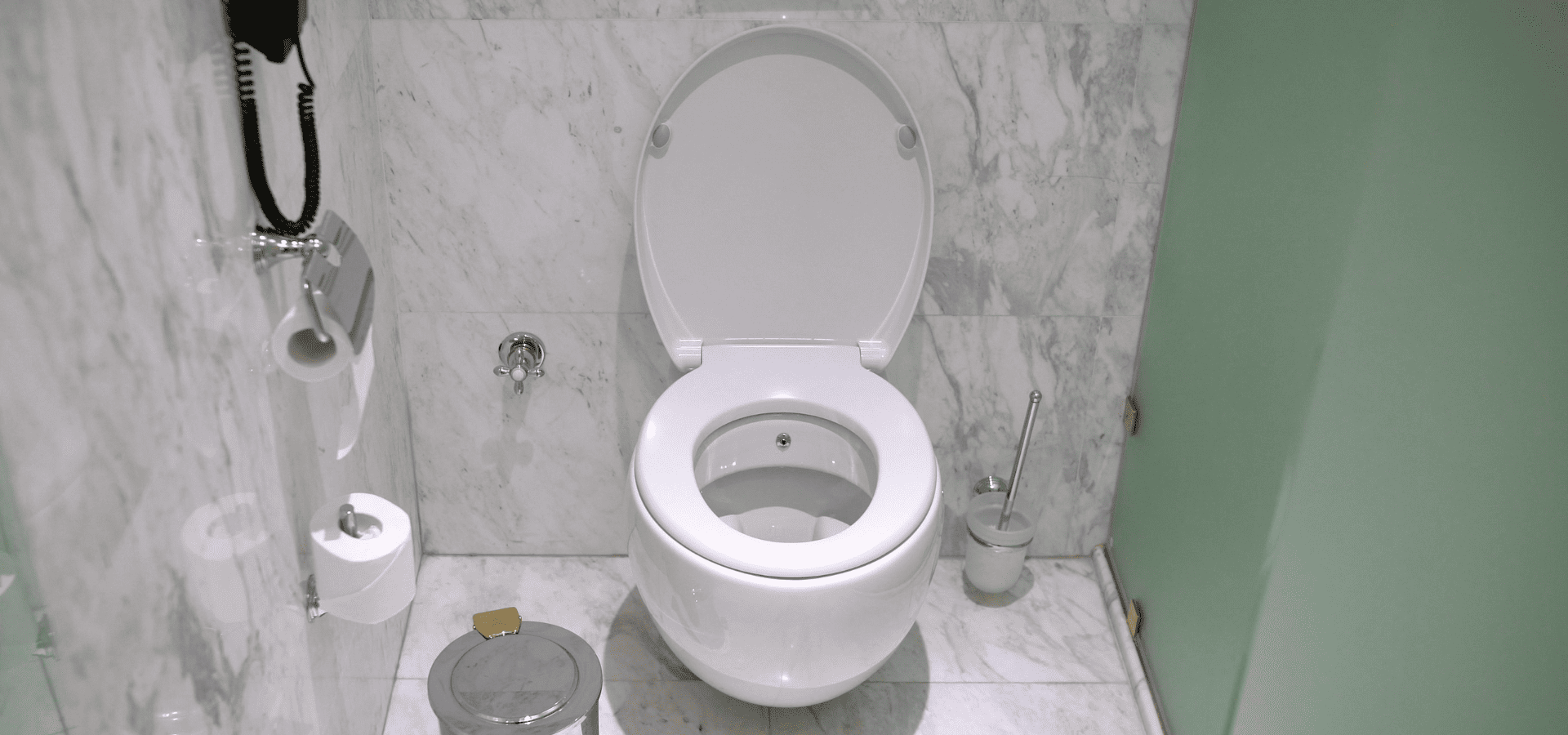
Toilets are going to be your most-used fixture. They may not command as much attention as your bathtub, but they're arguably the most important fixtures in any bathroom.
There aren’t too many different types of toilets as there are bathtubs, but we’ll quickly go over them nonetheless. The more important question is what features your toilet has.
Types Of Toilets
Toilets are more or less the same in design. Some are square, some are oval, some are wide, some are thinner, and so on, but in terms of design, there really isn’t too much variation because there’s only so much you can change a toilet while keeping it practical.
Still, there are certain slight design choices that will affect the functionality of your bathroom. There are:
- Traditional toilets: These are increasingly less commonly seen, but in some older bathrooms, you’ll see toilets with a flush pipe separating the cistern (water tank) and the toilet bowl.
- Close-coupled toilets: These are the opposite of traditional toilets. The cistern and toilet bowl are a single unit with no pipe separating them, so they’re more compact and look sleeker and more minimalistic.
- Back-to-wall toilets: Back-to-wall toilets are one of the most space-efficient toilets. Basically, all that’s sticking out of the wall is the toilet bowl. The rest of it, the cistern and the back of the toilet bowl, are all built into the wall.
- Wall-hung toilets: Lastly, as you’d expect, wall-hung toilets are basically toilets mounted to the wall. While they may at first glance look somewhat unstable, as long as they’re installed properly, they should last just as long as regular toilets. Wall-hung toilets are also a type of back-to-wall toilet, so they’re essentially the ultimate space-saving toilet since they also free up floor space.
Toilet Features To Consider
Generally, most toilets are about the same–you simply use them to relieve yourself. That is, unless your toilet has additional features that provide an upgraded experience.
These features aren’t necessary for sure, but they definitely improve your experience:
- Elongated toilet bowls: Elongated toilet bowls enhance comfort by allowing you to sit further in, so more of your thighs can go onto the seat. By distributing your weight over a larger area, there’s less stress per unit area on your legs, so you won’t feel as uncomfortable when using the toilet.
- Soft-close seats: Soft-close seats make it easier to lift up and put down the toilet seat and also prevent slamming, which will help reduce the wear and tear on your seat.
Dual-flush technology: Nowadays, dual-flush technology is pretty much a given, but again, for older models or bathrooms, there may only be one type of flush, so you’d be using the big flush even for smaller business. Dual-flush technology helps conserve water as you can use smaller flushes for smaller business.
Smart toilets: Smart toilets are quite costly, but they also seriously enhance the experience. Smart toilets come with features like deodorizers and smart bidets that can wash your rear for you after you’re done with big business.
What To Consider When Choosing A Toilet
Obviously, make sure you don’t choose one that’s too large for your bathroom. But besides that, there isn’t too much to look out for.
The most important consideration would be water efficiency. With multiple flushes per day, your toilet can quickly rack up a hefty water bill if it isn’t water-efficient.
Besides ensuring your toilet has a dual-flush function, you’ll also want to keep an eye out for the WaterSense label that can help you use up to 20% less water per flush than standard toilets.
3. Sinks & Vanities

When it comes to your sink, similar to your toilet, much of it is going to come down to the placement.
You can play around with the colors and material of course, and even use materials like brass gold for your faucet.
But the most important style difference is going to be in the positioning of your sink.
Types Of Sinks
Here are the various types of sinks:
- Undermount sinks: Undermount sinks are one of the most common types. They're basically sinks that are inside your countertop, and they give your bathroom a more minimalistic look.
- Integrated sinks: Integrated sinks are a subset of undermount sinks, but with integrated sinks, the material of the sink itself is the same as the rest of the countertop for an even more seamless look. So if your countertop is quartz, your sink material would be quartz too.
- Vessel sinks: Vessel sinks are sinks that sit on top of the countertop. These aren't just sinks that are on top–they’re meant to look like a separate entity that's sitting on the countertop, and they usually have louder and more dramatic designs.
- Pedestal sinks: Pedestal sinks are just sinks without storage underneath and with a vertical pedestal leg underneath that conceals the plumbing. These are much more space-efficient than sinks with storage, so they're usually used in smaller bathrooms.
- Wall-mounted sinks: Finally, wall-mounted sinks are another popular choice for small bathrooms. Wall-mounted sinks are the most space-efficient type of sink as they literally only take up a small space on the wall and don't take up any floor space at all.
What To Consider When Choosing A Sink Or Vanity
The first thing to consider is of course how much space you have in your bathroom and whether it can accommodate a larger sink if you want one.
Also, don't forget to take into account whether you need the storage in your vanity or you can do without it, as well as how much counter space you'll see yourself needing.
Other than those space considerations, your choice of sink and vanity will largely boil down to your personal preferences.
4. Showers & Showerheads
Finally, the last main fixture in your bathroom is your shower, which also includes the showerhead.
Types Of Showers
At its core, showers are just a space with a showerhead, and there's not too much you can change about that.
What you can change though, are the enclosure style and layout:
- Walk-in showers: Walk-in showers are showers with very low or no curb at all, designed to make it easy for people to walk in, thus the name.
- Shower enclosures: Shower enclosures are just that–showers that are enclosed, so there will be a door for you to enter and leave from. Most enclosures are glass, though there are other materials available, such as stone slabs or tile walls.
- Shower-tub combos: Lastly, shower-tub combos are tubs with showerheads installed on top so that users can take showers directly in the bathtub. This can help conserve water as users can opt for showers when they feel like it.
Types Of Showerheads
For the showerheads, there's even less variation.
Rain showerheads give you a waterfall-like experience, and there are also body spray showers that feature sprays around your walls to give you a spa-like experience.
You can also have dual showerheads, which are basically configurations where you have a rain showerhead and a regular handheld showerhead.
That's pretty much it for your showerhead variations.
What To Consider When Choosing A Shower And Showerhead
When it comes to your shower and showerhead, there really isn't too much to consider except your personal preference.
There are smart features that can enhance the experience, like digital temperature control systems for ultra-precision, Bluetooth speakers, and built-in seating.
Basically, just ask yourself what additional
luxury features you want on top of your shower.
Conclusion
Knowing your options will help you make better decisions for yourself and your bathroom, and with this guide, you should be well-equipped.
That said, even when you know which fixture you want, given how pricey fixtures are by nature, more luxurious ones may be out of your reach. That is, unless you opt for more affordable options. You can find these at clearance sections, discount retailers, or get them second-hand.
A gently used luxurious freestanding bathtub will work just as well as a new one, and you'll be saving hundreds or even thousands of dollars. If you're looking for more ways to keep your costs down, check out our
budget bathroom remodeling guide.
In addition, bathroom fixtures are very water-intensive. If you're looking for ways to cut down on water usage and make your bathroom more environmentally friendly, check out our eco-friendly bathroom remodeling guide.
And if you're looking for someone you can count on to do a good job with your fixture installation or even source one for you, don't hesitate to reach out to
Denver Bathroom Pros!
More From Us

